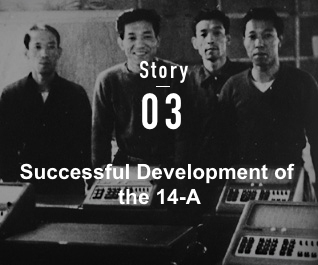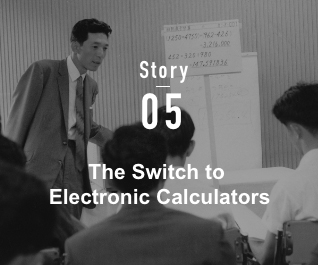
Casio Computer Co., Ltd. Founded
Combining Ideas to Accelerate Development
Combining Ideas to Accelerate Development

Casio Computer Co., Ltd. Founded
Combining Ideas to
Accelerate Development
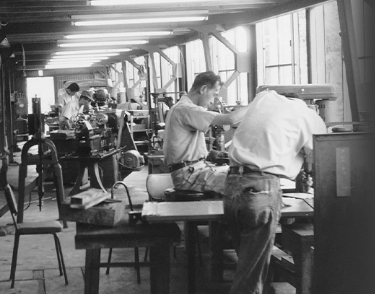
- Toshio’s new wiring system
-
In 1957, the same year as the launch of the relay calculator, the four Kashio brothers founded Casio Computer Co., Ltd. to develop and manufacture calculators. Keen to make this business a success, the brothers were determined to fulfill their respective roles.
One thing that can lead to issues when developing calculators is miswiring. To prevent confusion, Toshio devised a method of covering the wires with colored rubber. The colors were red, white, blue, yellow, green, purple, black, brown, orange, and gray, and he also came up with a mnemonic phrase to remember them. This system had an immediate effect. Production started at 20 calculators a month and gradually increased.
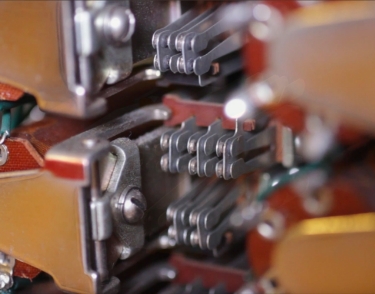
- Yukio’s ideas
-
Although customers were pleased with the improved convenience, the relay calculators tended to suffer from contact failures, which caused a lot of trouble during the first month or so. The first issue was that the relays became covered in a fine layer of dust. The second was that the pieces of steel inside the calculator retained traces of magnetism. Both issues could cause the calculator to stop working.
Determined to make improvements, Yukio set his mind to the problem. He succeeded in drastically reducing the number of defects by inventing a double contact method in which the contact parts were split in two. He also suggested the use of stainless steel, which is unaffected by magnetism, and this had the added benefit of reducing costs. Alongside Toshio, the calculator’s developer, Yukio was also gaining prominence as an engineer.
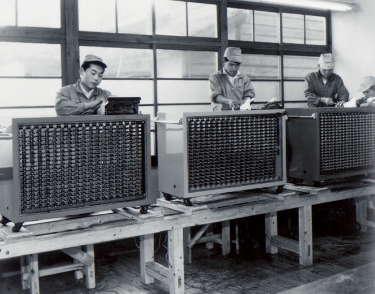
- “We have to do something.”
-
However, another predicament befell the brothers. Toshio collapsed from overwork. He had been shouldering too large a portion of the work. Although Yukio and the younger employees handled the assembly and inspections, they could not perform these tasks without properly understanding the theory behind the calculator. As they proceeded with mass production, Toshio received a continuous stream of technical questions from the other members, adding considerably to his workload.
“We have to do something,” thought Yukio. He began studying Toshio’s hand-drawn diagrams to figure out exactly how the calculator worked. Afterwards, he held study sessions to teach the younger employees. One by one, the number of employees who fully understood the inner workings of the calculator increased.
Toshio later returned to work in good health. Although the production volume was somewhat affected, the brothers supported each other, and the subsequent research and development proceeded smoothly.
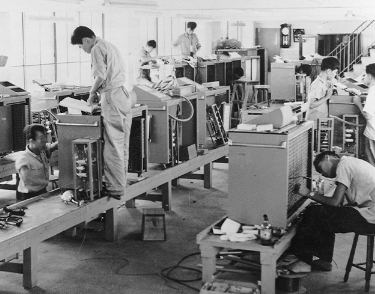
-
Expansion in response
to customer demand -
In 1959, two years after the development of the 14-A, Casio launched a new model called the 14-B, which could also calculate square roots. This was in response to a request from a university. Upon his return, Toshio developed a new theory that made the calculation of square roots possible. The company subsequently released a series of new products, including the 301, a scientific calculator, and the TUC, which combined a calculator and a typewriter to automatically generate spreadsheets and output forms. Yukio and the other employees continue to respond to demands.
In 1960, a new factory was built in Higashiyamato City, Tokyo, to handle the increased production. Tadao was in charge of finding a site and the financing. Each step, from the manufacturing of individual parts to assembly and inspection, could now be done in a streamlined process. The number of employees increased to about 200, and Casio’s business truly took off.
